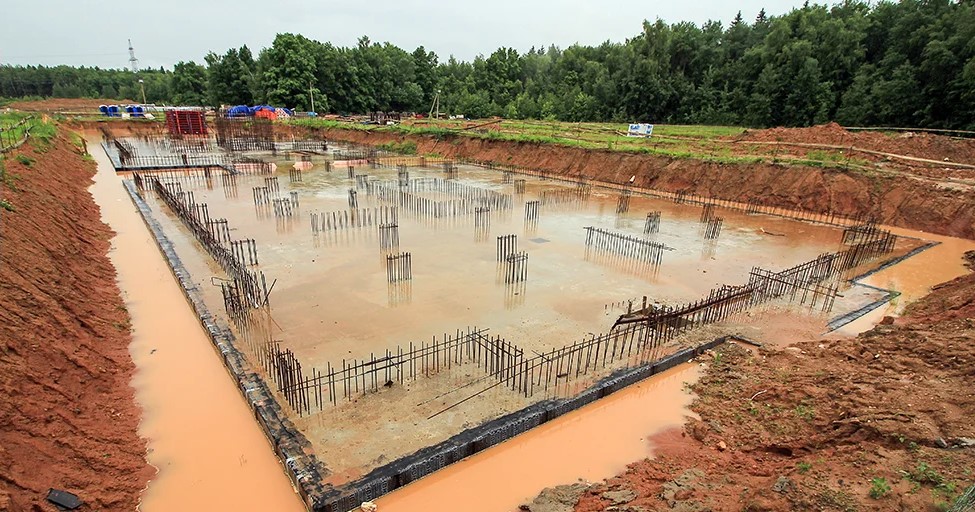It’s important to keep the environmental risks of your building projects to a minimum. Here’s a checklist to help you manage these factors.
Risk #1: Flooding
Understand historical flood patterns and future flood maps. Keep an eye on expanding urbanisation. Buildings and sealed surfaces will impact natural water flows and create stormwater. , that could lead to higher flows. That could lead to flooding away from waterways, too.
Seek up-to-date information from the local council or state government authority, such as this one in Victoria. GeoScience Australia also has a national flood risk information portal.
Construction-tech company, Procore explains how to protect your project site from flooding.
Risk #2: Contaminated land
Your building site might come with a history of contaminants including:
- Trace elements, such as arsenic, cadmium, copper, mercury, nickel, zinc, lead, etc
- Asbestos
- The banned firefighting foam, PFAS, and other related chemicals
- Chemical solvents, or
- Heavy metals.
These issues may be due to agricultural, chemical storage or industrial activities including gas works, dry-cleaning services, landfill, or ex-petrol stations. This United Nations website explains inorganic or organic compounds that can cause hazards in soil.
Regulation of contaminated land in NSW, for example, comes under the Environmental Protection Authority, via the Contaminated Land Management Act 1997. Planning authorities also get involved under the State Environmental Planning Policy (Resilience and Hazards) 2021 and the Managing Land Contamination – Planning Guidelines. The South Australian EPA has issued an eight-page fact sheet on dealing with site contamination.
Meanwhile, the National Association of Testing Authorities (NATA) assesses and accredits organisations against international standards. Businesses or consultants offering to test the soil on your project site need NATA accreditation – you can find them on the register. Here’s geotechnical guidance for those testing soils and aggregates.
Risk #3: Ground stability
Geotechnical testing will also help highlight how and if historical activities on the site have increased potential environmental risks. Those activities, as well as natural land movements, can pose issues. Beware of:
- Tunnels
- Manmade shafts (such as through mining or quarrying), as well as
- Subsidence
- Sloping land
- Natural land movements
- How existing nearby structures could impact – even redirect – groundwater flow beneath the surface.
Risk #4: Underground assets
Before breaking ground, check in with the free referral service, ‘Before You Dig Australia’ (BYDA).
However, those infrastructure plans tend to be indicative rather than accurate or comprehensive. This is why even BYDA encourages you to hire a certified locator if there are infrastructure assets near your site, but you can’t find them. You may also have to verify as you go using online tools, such as ground penetrating radar, and GIS to harness to be triply sure.
Risk management for construction
Checking for risks before you begin work helps reduce your risks of chancing upon hidden environmental risks.
Part of a comprehensive risk management strategy is to consider insurance to manage certain construction risks.
What’s useful about construction insurance is that it covers your project while under, during, and to a limited extent, post construction. It will help protect your project for:
- Material damage, such as unexpected materials loss or workmanship issues that you have to fix as per the contract
- Physical damage or loss, including to equipment and plant on site
- Liabilities extending to third-party property/bodily injury and worker-to-worker injury.
We can guide you through a consistent risk management framework. That involves us discussing the outline of your activity, seeing what’s involved with each step and attaching risks to those, which we’ll then rank. That framework will help you address each risk through mitigation measures, controls or, where possible elimination. This is a good starting point for that discussion – the Victorian EPA’s guide for civil construction, building and demolition.

